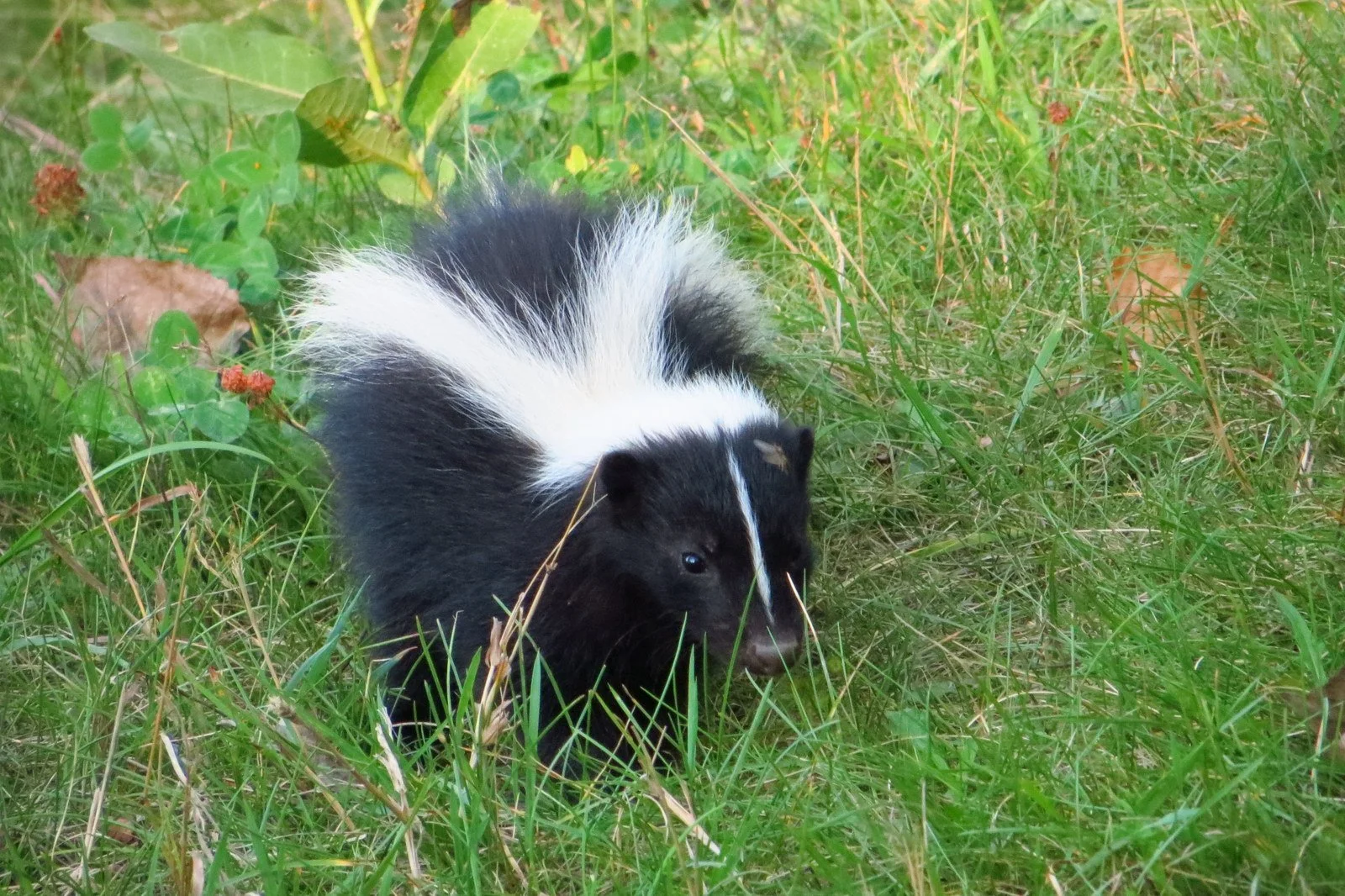Photo by Márcio Cabral de Moura FCC
The striped (or “common”) skunk doesn't have a great reputation. It’s hard to get past the smell. They’re unpopular for sometimes stealing eggs, honey, and vegetables. If you Google skunks, you’ll finds ads and advice for how to get rid of them. They've entered common parlance; no one wants to be the skunk at the party or the dead skunk on the side of the road.
My personal experience with skunks was painful. Jake, our first dog and wonderful yellow lab, caught a skunk while we were pheasant hunting and was drenched. That would have been bad enough but skunk populations are cyclic and stupendous numbers of skunks roamed the countryside. Jake was stubborn and had a long memory—he just could not learn the right lesson from some of those memories. He continued to catch skunks. When we arrived home after his third catch and immersion, Sally broke down in tears. I was in shape in those days and I learned to tell the difference between Jake's focus on a pheasant or on a skunk. When I recognized the latter, I sprinted to beat him to the skunk and drag all 95# of him away. Leaving some baffled and relieved skunks.
Photo by Mike Budd/USFWS
A recent and different experience created a new and better appreciation of skunks. As I left the house yesterday during a sunny, crisp afternoon, I detected a whiff of that smell. Then a large skunk appeared. He loped out of the side yard, skirted the front yard and driveway and crossed the street. I walked up a cul-de-sac and watched him cross another yard.
What a sight. He was one of the most striking and vivid mammals I'll ever see. His black fur was rich and glossy and the large, pure white stripe down his back was spectacular. The sun illuminated him perfectly. He had that rolling gait one sees in minks and otters but he was a bit more fluid and graceful. I could barely believe what I was seeing.
That apparition occasioned the Google search. Most of a skunk's diet is made up of insects. On farms, the amount of destructive bugs they eat outweigh the damage they might do. And, just by way of cool things to know, they are highly resistant to snake venom (check out this cool article!).
This handsome skunk is just another reminder of why we should spend as much time as we can outdoors. There's always something worth seeing, whether it's in your neighborhood or some neat patch of public land or a SoWBA sanctuary.
With the Knowles-Nelson Stewardship program imperiled, I've started to consider most Republican legislators, especially some of the Senators, skunks, in that negative sense—killjoys, spoilers and pests who destroy good things. But they can show their better side, just like the skunk I saw, and do a powerful bit of good. If we're willing to be fair, they have some legitimate concerns about Stewardship in terms of needing a fair and accountable review of purchases, especially the huge ones, and in deciding on the right level of funding in terms of the program's need and other capital projects. They need to work with the advocates for Stewardship and Democrats to create a Stewardship program that works for everyone.
So, please remember to contact any legislator you know and ask them to get to work on Stewardship, pronto. You can skip the skunk analogy; it probably won't help. Then reward yourself with a walk outside. I hope you encounter something as lovely and unexpected as that skunk.
Written by Topf Wells, Southern Wisconsin Bird Alliance advocacy committee





